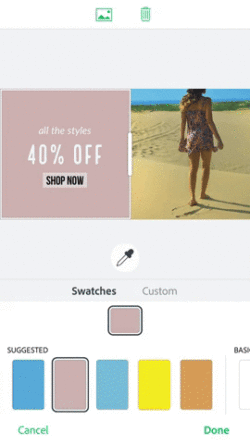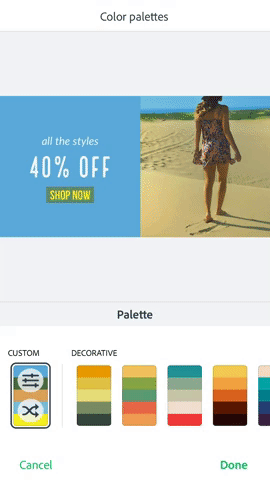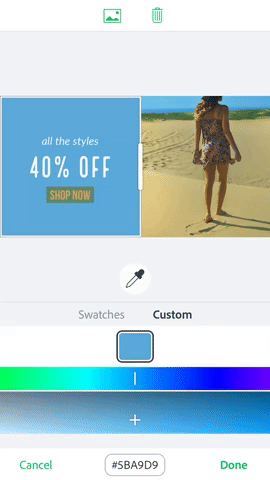Color is a crucial element in establishing a strong brand identity, as it can evoke emotions, convey messages, and set your business apart from competitors. However, with countless shades to choose from, finding the perfect combination that truly represents your brand can feel overwhelming. It’s like staring at rows of paint swatches in a hardware store, trying to envision how a particular color will look on your walls—and more importantly, how it will make you feel.
Many business owners, even those well-versed in color theory, struggle with this critical decision. They often ask, “How do I choose my brand colors?” The challenge lies in selecting specific hues that not only align with your brand’s values and messaging but also resonate with your target audience. This is where Adobe Express can be a game-changer, simplifying the process with intuitive tools and a straightforward three-step guide to help you confidently develop a cohesive and impactful brand color palette.
1. Start with a neutral color
Get started by choosing your base. One-to-two neutral covers will act as the canvas on which you’ll paint. Neutral colors are generally defined as black, white, ivory, silver, gray, brown, tan, gold, and beige colors. It’s helpful to think in terms of warm or cool colors, which can influence your entire palette. Blacks, browns, tans, golds and beige are considered warm, while white, ivory, silver, and gray are cooler in comparison.
Pro-Tip: Get inspiration for neutral colors in Adobe Express Color Palette. You can do this by starting from a solid background color. Adobe Express Photo Editor will suggest basic colors across the spectrum. Tap into a neutral color you like to explore the shades and grab the hex value. Alternatively you can derive inspiration from a photo–try searching for things like “neutral” or “sand” in Adobe Express free image search, then explore the palettes Adobe Express auto-generates.

2. Add two “pop” colors
Next, we need to add some color to the canvas. These are going to be your main colors that represent your brand. This is the color that grabs the attention of your audience and becomes the star of your visual identity. Go for vibrant tones that play well together. With these tones specifically, it’s important to think about what your brand stands for and the mood you want to set. Here’s a quick primer on what brands need to know to use color effectively. In the simplest terms, cool colors (blues and greens, for example) tend to have a calming effect, while warm colors (reds and oranges) tend to excite. You might choose a cool palette as your main colors and then add a pop of warmth to liven it up.
This step can be the most intimidating choice. We recommend finding inspiration in your favorite photographs, places, and things. Adobe Express makes this discovery fun and easy because it extracts the colors from your images so you don’t have to do any guesswork in color-matching or hunt down the hex values yourself. Landscape and cityscape photography is a great place to find color inspiration. If your brand is lively and exciting, you might choose warm, active colors like reds and oranges. If you want to evoke a calming mood, cooler colors are the way to go.

The following slideshow shows how two pop colors and a neutral color work together. These palettes were auto-generated in Adobe Express derived from desert vistas as inspiration.









